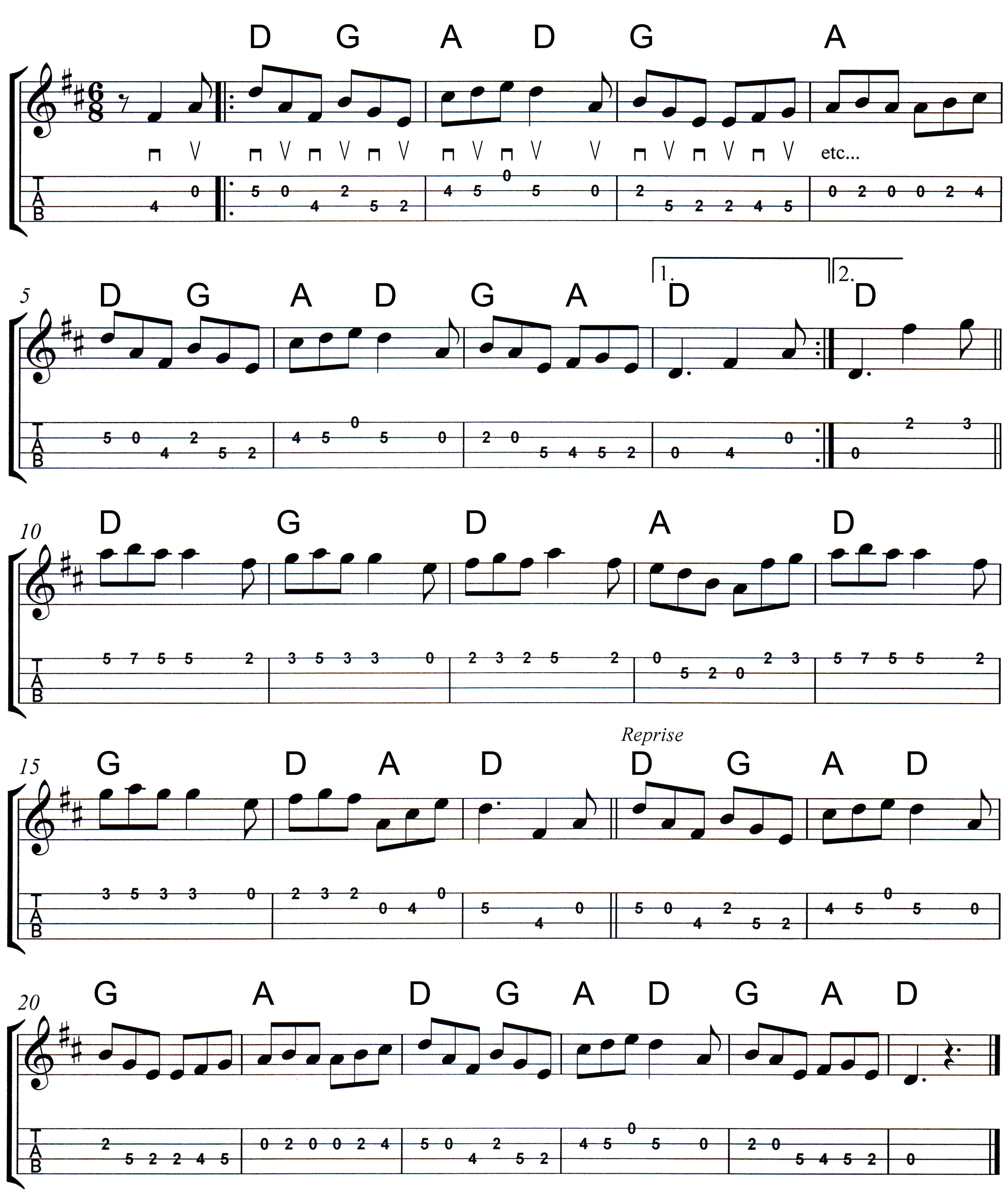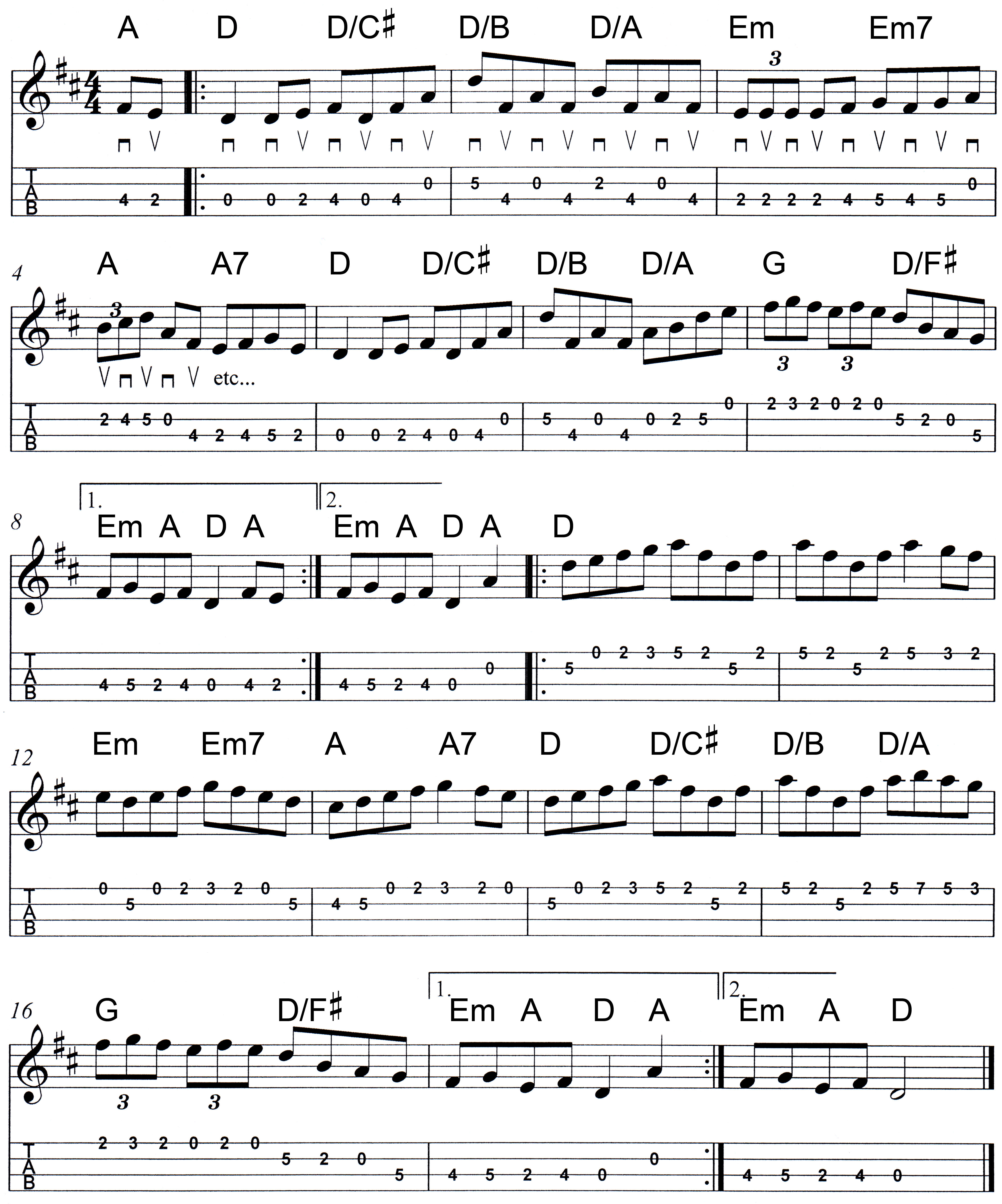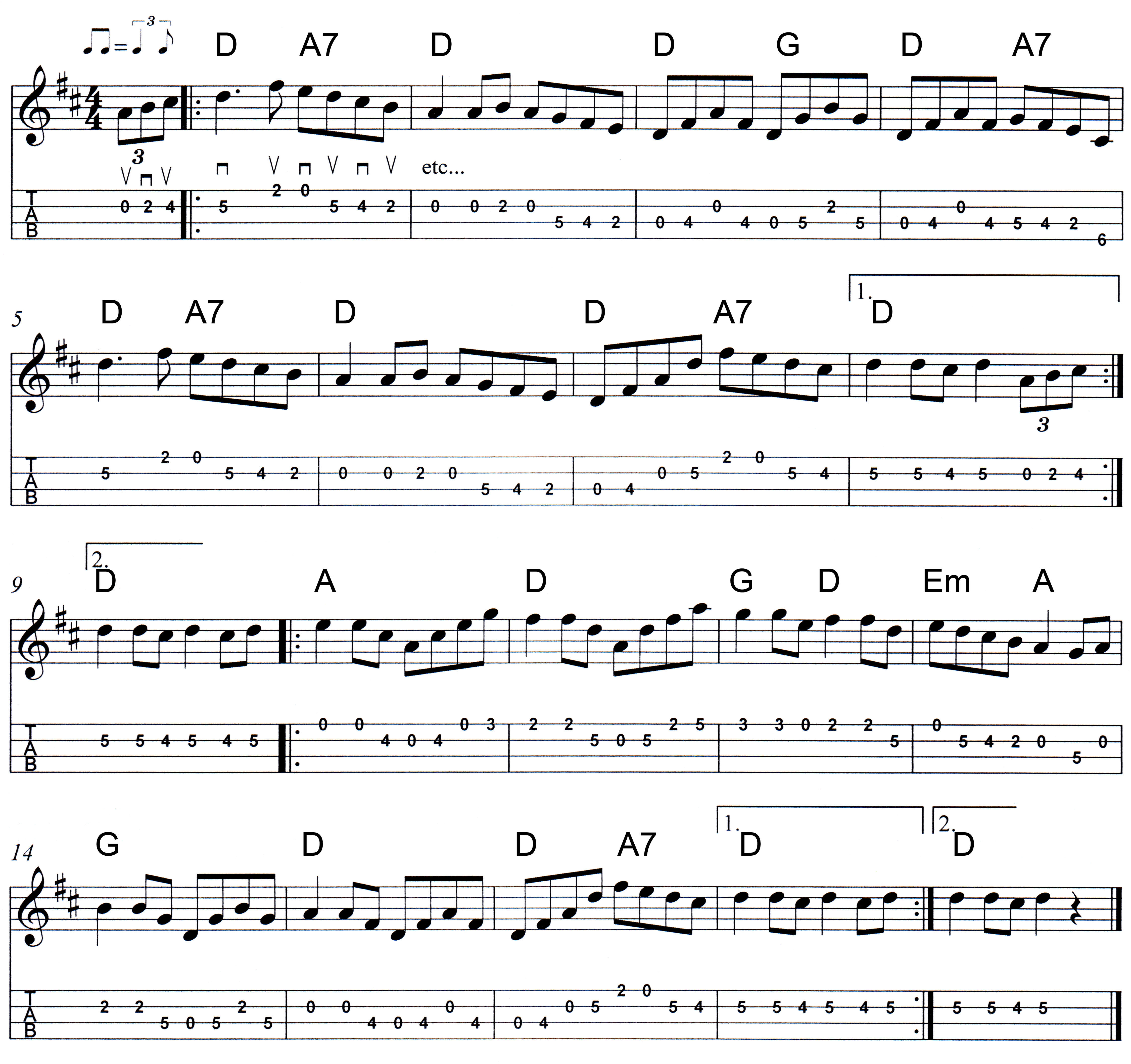
This installment we are going to give you a few tunes to work on to practice everything you have been learning so far. Hopefully, you've gone back and played chord accompaniments to the songs, not just the melody lines.
It is important to have good chord chops as well as melody playing chops. So be sure to practice both rhythm and melody lines when you are studying so you can do either with great technique.
Now, before we begin, a little fun. A lot of what you'll play will fall into one of the following categories, particularly if you are playing music outside the Country, Rock or Pop arena of music. And if you are playing
fiddle tunes, then you really need to know the following differences between a reel, a jig, and a hornpipe.
Reels:
This is the most common type of dance tune played in Irish traditional music, originally heavily influenced by similar dances in Scotland. Usually it consists of two or more parts which are played twice. Each
part up of eight measures (or the common slang: bars), and the time signature is 4/4. This means that there are four beats to every bar (each beat is counted in even measure as 1-2-3-4 | 1-2-3-4).
Or, if you can say 'double decker, double decker' in time to the music (1& 2& 3& 4&), it’s a reel.
Another variant is as follows: "THIS-is how-a REEL goes | THIS-is how-a REEL goes," ( 1& 2& 3 4 | 1& 2& 3 4 )
Jigs:
The jig (or double jig) is another common type of dance of English origin. Like the reel, the tune usually consists of two parts made of eight bars, but the time signature is 6/8. This means that there are six
beats to every bar (Note: each beat is counted in groups of three: 123-456, but it can be counted in '2' like this: 1 & a 2 & a ).
Or, if you can say this: ‘carrots and cabbages, carrots and cabbages’ in time to the music, its a jig.
Hornpipes:
Hornpipes are dance tunes that appear to have originated in the maritime tradition. The most common type of hornpipe is similar to the reel in terms of time signature (4/4), but instead of counting four even beats
per bar there is an emphasis on the first and third beats, which give the tune a kind of ‘swing’ or ‘bounce’ feel ( each beat is counted as 1-2-3-4 | 1-2-3-4).
Well, I hope that clears up some of the confusion. Now on to the music...
The first tune here is "Accidental Jig". Remember from the previous lesson the crosspicking technique of strict alternating pick strokes. Take your time. This is not a difficult tune, but it has some fingering
challenges. I have purposely left the fingering off. Mandolin necks are small, and hands vary. What works for me will not necessarily work for you. Go slow, be common sensible about your finger choices. You'll do well.

The second song is a reel, "Donegal Reel". So the feel is very different than a jig. Continue the crosspicking technique in this tune as well. Take your time, get the fingering right, and play slowly to learn
the patterns.

While both of these are fairly busy tunes, they are not difficult. You are staying mostly in one position. This will help you to more easily master the best approach to fingering and just generally learning your way around the fret board in this position, combining open string notes and fretted notes.
For the third and final tune you'll be playing a hornpipe, and you'll continue with the crosspicking technique. This is "Miss Thompson's Hornpipe" and is not at all difficult to play.

Now, while crosspicking is an important ability, it does not mean you should abandon economy picking techniques.
Now, go start makin' some foot stompin' music!